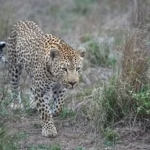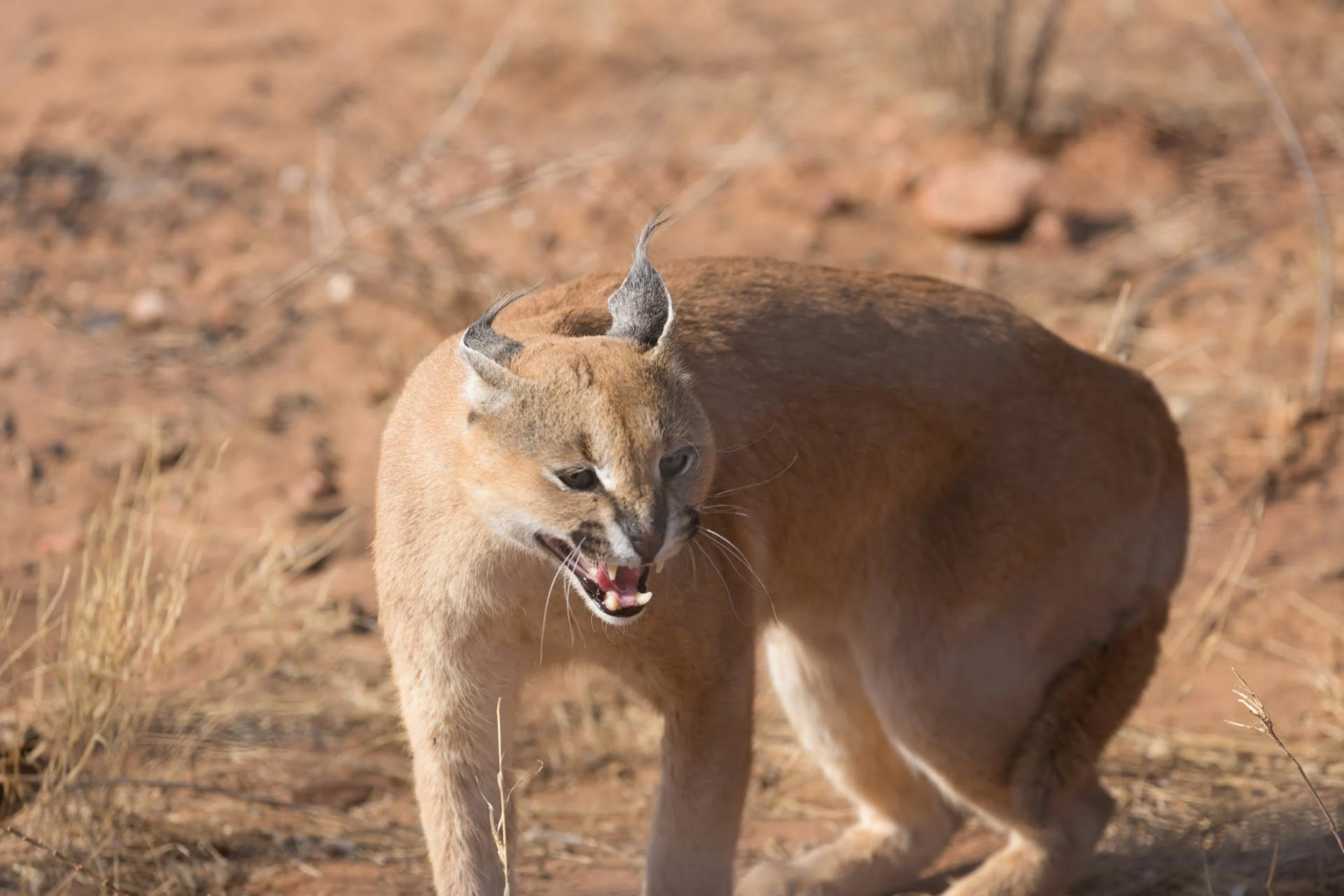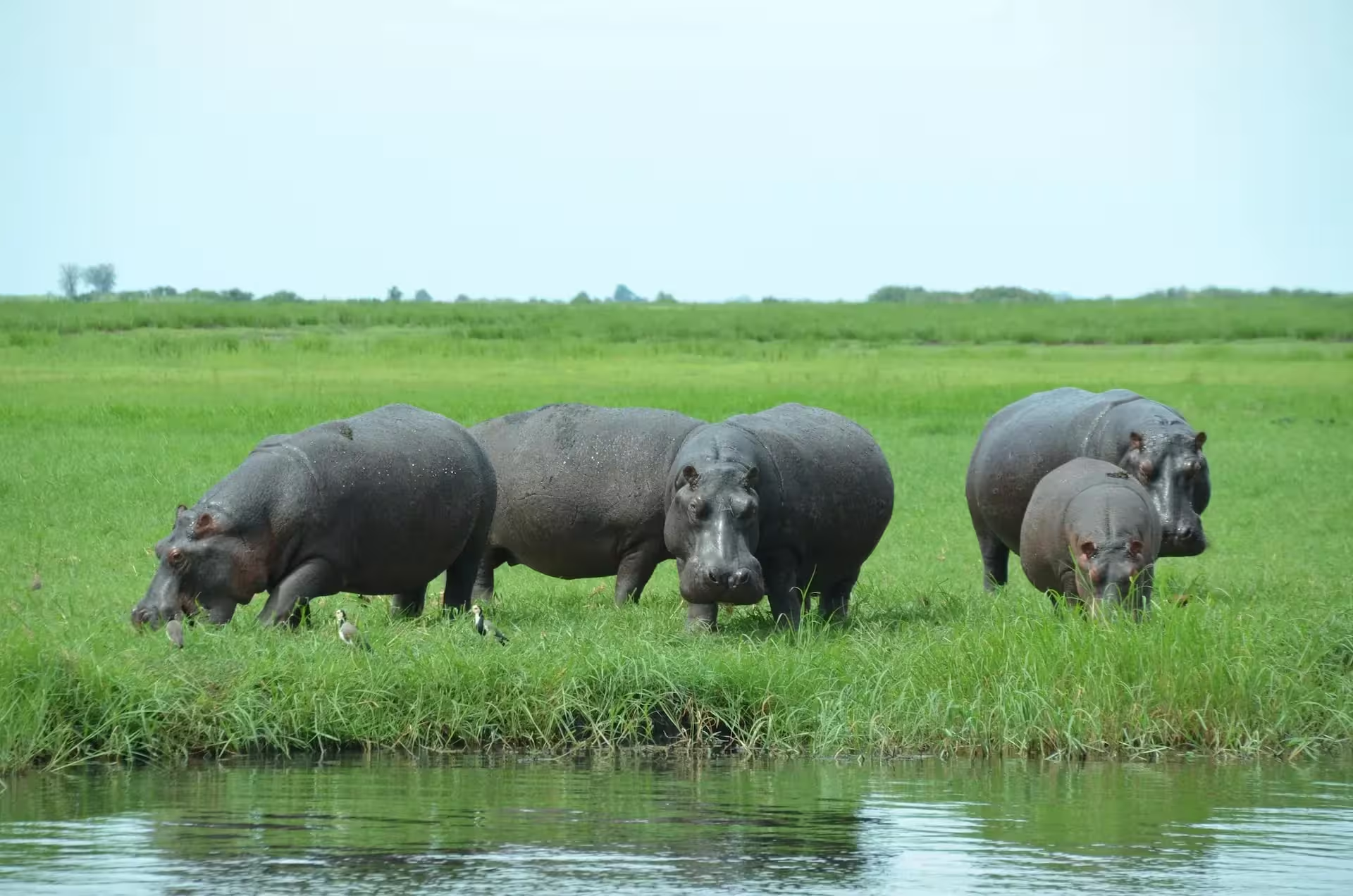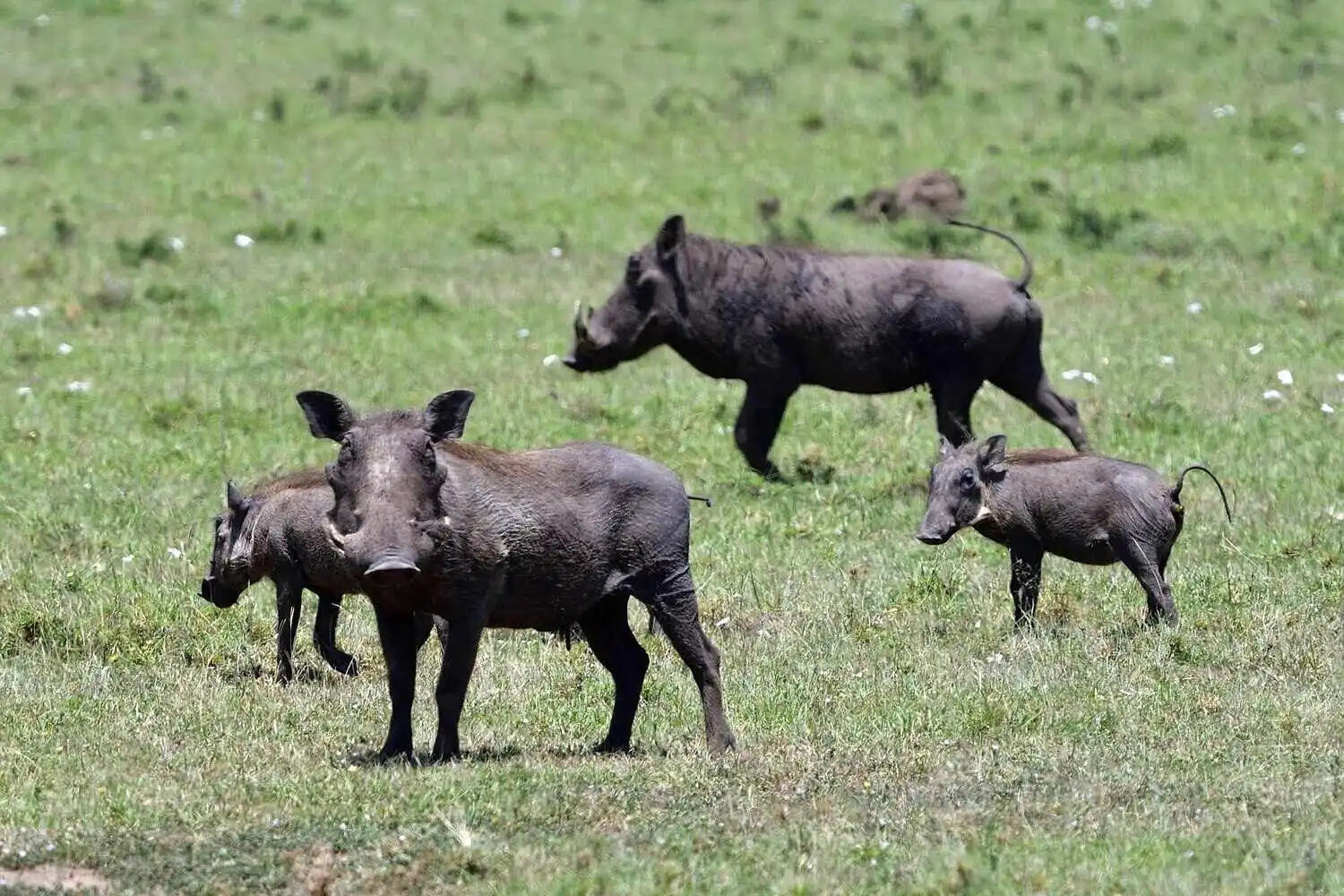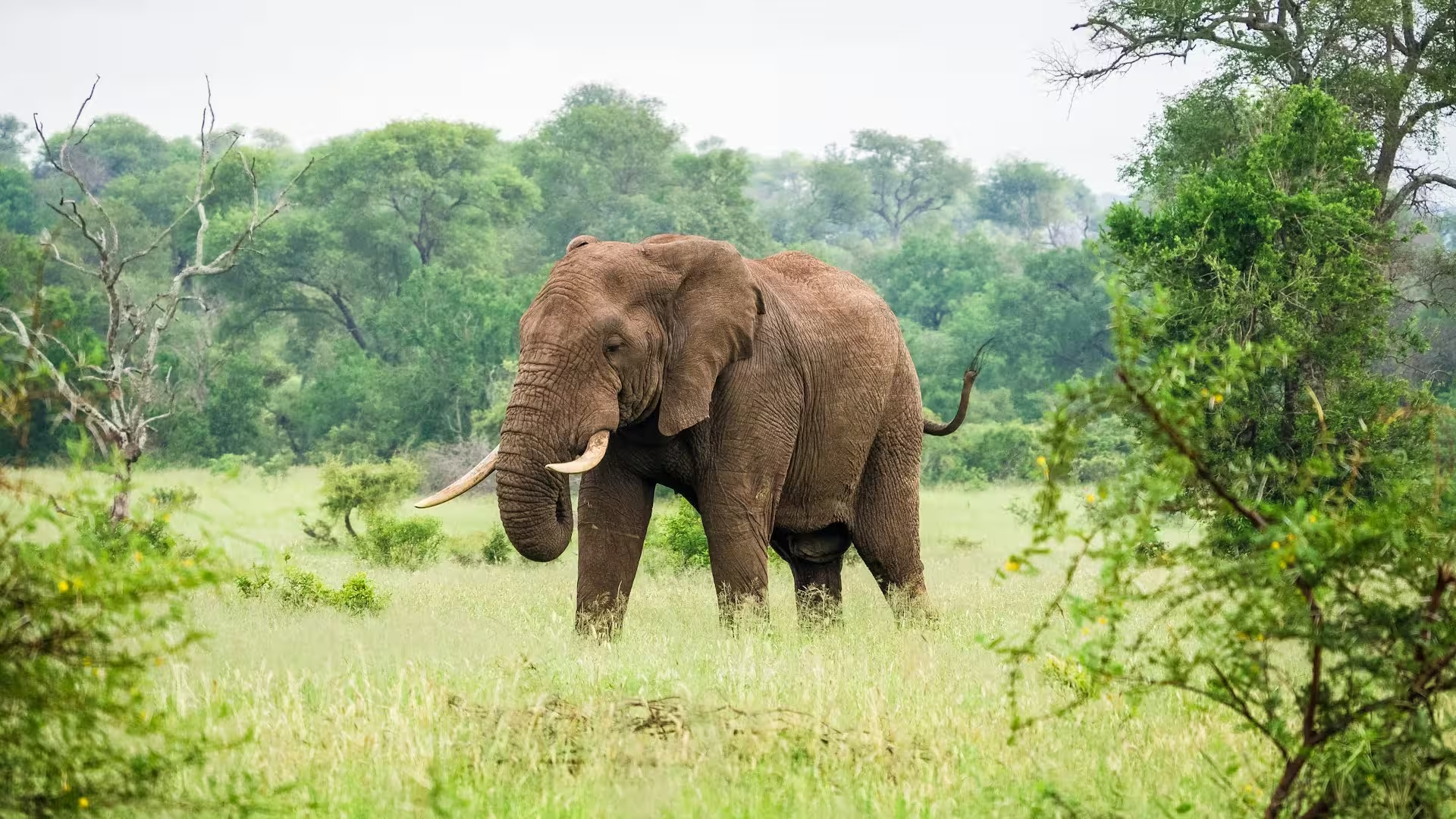How does African Lion look like ?
The African lion, a magnificent and formidable big cat, commands attention with its majestic presence. Cloaked in a tawny golden coat, this regal creature boasts a distinctive mane that varies in color, ranging from blond to dark brown.
Easily identified by its white underbelly, the lion carries an air of authority that extends to its impressive tail. Marked with a stunning blend of tawny and black rings, the tail adds to the lion’s captivating appearance. Famous for its regal demeanor, the African lion holds a significant place in the wild, symbolizing strength and pride.
Key Characteristics Table
| Characteristics | Description |
|---|---|
| Scientific Name | Panthera leo |
| Conservation Status | Vulnerable (IUCN Red List) |
| Social Structure | Highly social, living in groups called prides. |
| Weight | Males: 150 - 250 kg (330 - 550 lbs) Females: 120 - 180 kg (265 - 395 lbs) |
| Shoulder Height | Males: 1 - 1.2 meters (3.5 - 4 feet) Females: 0.9 - 1.1 meters (3 - 3.6 feet) |
| Body Length | Males: 1.8 - 2.1 meters (6 - 7 feet) excluding tail Females: 1.5 meters (5 feet) excluding tail |
| Tail Length | 70 - 100 cm (2.3 - 3.3 feet), with a distinctive black tuft at the end. |
| Lifespan | Wild: Males rarely exceed 12 years; Females up to 16 years. Captivity: Up to 20-25 years. |
| Key Physical Traits | Males: Prominent mane (color/length varies), larger build. Both: Tawny/golden coat, powerful build. |

What African Lion like to eat ?
African lions are carnivores, relying on a diet of large herbivores in their savanna habitats. Their prey includes buffaloes, wildebeests, zebras, giraffes, and various antelope species. Lions adapt their hunting strategies based on prey availability and season. Cooperative hunting in prides enhances their success. In addition to active hunting, lions scavenge and may steal kills from other predators, contributing to their role as apex predators in the ecosystem.
In the jungle, lions must strike a balance between hunting and securing enough food. Lions play a crucial role in controlling the populations of herbivorous animals, which, in turn, helps maintain the natural balance of the environment.
Habitat and Range of the African Lion
African lions live across a wide range of landscapes, but they thrive best in open grasslands, savannas, and lightly wooded areas. These environments give them plenty of space to roam, hunt, and rest under the shade. Lions avoid thick forests and deserts, where it’s harder to find prey and water.
They are mostly found in sub-Saharan Africa, spread across eastern, southern, and a few parts of central Africa. However, their range has shrunk over time due to human activities and habitat loss. Today, wild lion populations are scattered in protected national parks and reserves.
Best Places to Spot African Lions in the Wild
If you’re planning to see lions in their natural home, here are some of the top safari destinations where sightings are common:
- Masai Mara, Kenya – Known for large prides and the Great Migration, lion sightings are almost guaranteed here.
- Serengeti National Park, Tanzania – A vast open plain full of prey animals, perfect for spotting lions throughout the year.
- Ngorongoro Crater, Tanzania – A unique spot with a dense population of lions living in a natural volcanic bowl.
- Okavango Delta, Botswana – A rich wetland area where lions have adapted to hunt in waterlogged landscapes.
- Kruger National Park, South Africa – One of Africa’s oldest parks, it offers easy access and reliable lion sightings.
- South Luangwa National Park, Zambia – Less crowded but excellent for watching lion behavior in remote settings.
These parks are not only great for lion viewing but also offer chances to see other big cats, elephants, giraffes, and herds of antelope. The best time to spot lions is early in the morning or late in the afternoon when they’re more active.
Lions usually rest during the heat of the day, so guides often track them by following fresh paw prints, sounds, or even the calls of alarmed animals nearby.
Read More About Best 5 National Parks in Africa to spot African Lion
Know the importance of Lions in African culture
From ancient civilizations to modern times, lions have been revered as symbols of power, courage, royalty, and leadership. In ancient Egypt, lions were worshipped as deities, linked to the sun god Ra and the goddess Sekhmet. Depicted in art, architecture, and hieroglyphics, lions served as guardians and protectors. The Sphinx, embodying a lion’s head and human body, stands as an iconic testament to their symbolic importance.
In various African cultures, lions were revered as powerful spirits and ancestral guides. Their roars were believed to convey messages from the spirit world, and lion skins and claws symbolized authority, worn by chiefs and warriors.
Throughout African history, lions featured prominently in folklore and storytelling, portrayed as wise and benevolent creatures. Their strength and leadership qualities made them popular symbols in literature and art.
In modern times, lions remain integral to African culture, appearing on national flags, emblems, and currencies, representing national pride and strength. Lion safaris and conservation efforts contribute to tourism, supporting local communities.

Fun fact about African Lions
- Lions live in family groups called prides that can have over 30 members.
- Male lions grow thick manes, and darker manes often mean the lion is older or healthier.
- Lions are the only big cats that live in social groups instead of living alone.
- A lion’s roar is so loud it can travel up to 8 kilometers away.
- Female lions hunt for food while males guard the pride and protect the cubs.
- Lions rest or sleep for up to 21 hours a day to save energy.
- Lion cubs are born with spots that help them hide in grass, but the spots fade as they grow.
- Lions can run as fast as 80 kilometers per hour for short bursts.
- Wild African lions now mostly live in sub-Saharan Africa, with a small group surviving in India.
- Lion numbers are falling due to habitat loss and conflict with people, making them a vulnerable species
Difference between African Lion and Asiatic Lion
| Feature | African Lion | Asiatic Lion |
|---|---|---|
| Geographic Range | Sub-Saharan Africa (Masai Mara and serengeti) | Historically Middle East to Indian subcontinent; Current population in Gir Forest, India |
| Mane Size and Appearance | Fuller and more noticeable manes, varied colors | Shorter and sparser manes, less variation |
| Social Structure | Larger prides with related females, offspring, and male coalitions | Smaller prides, males often solitary or in smaller groups |
| Habitat and Terrain | Various habitats including grasslands and savannas | Historically diverse habitats, currently in dry deciduous forest |
| Conservation Status | Vulnerable (IUCN Red List) | Endangered (IUCN Red List), single population in Gir Forest |
| Population Status | 20,000-30,000 | 650 |
| Genetic Differences | Genetically diverse with several subspecies | Distinct subspecies (Panthera leo persica) with genetic differences |
Top Safaris Where You Can Spot African Lions
Get ready for unforgettable lion sightings on our top-rated African safaris. Travel with expert guides, explore wild landscapes, and witness lions in their natural home. Join us for a thrilling, once-in-a-lifetime adventure!







